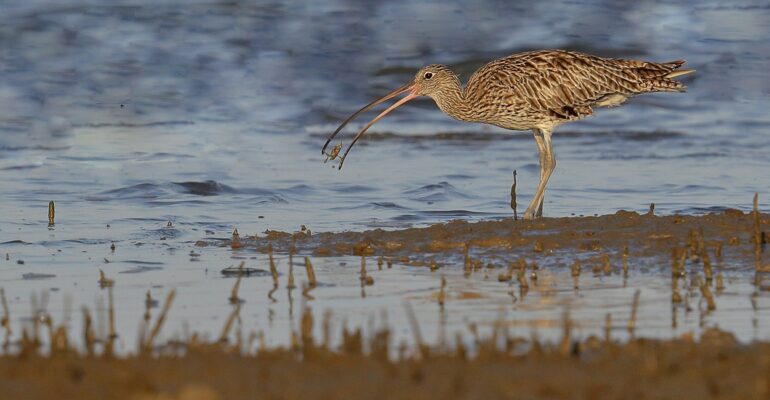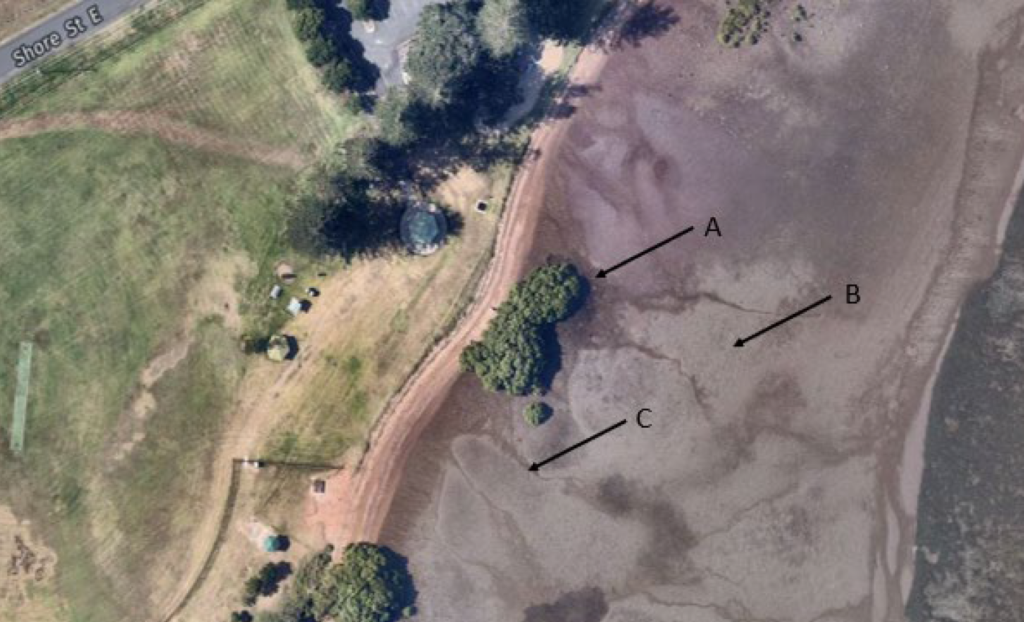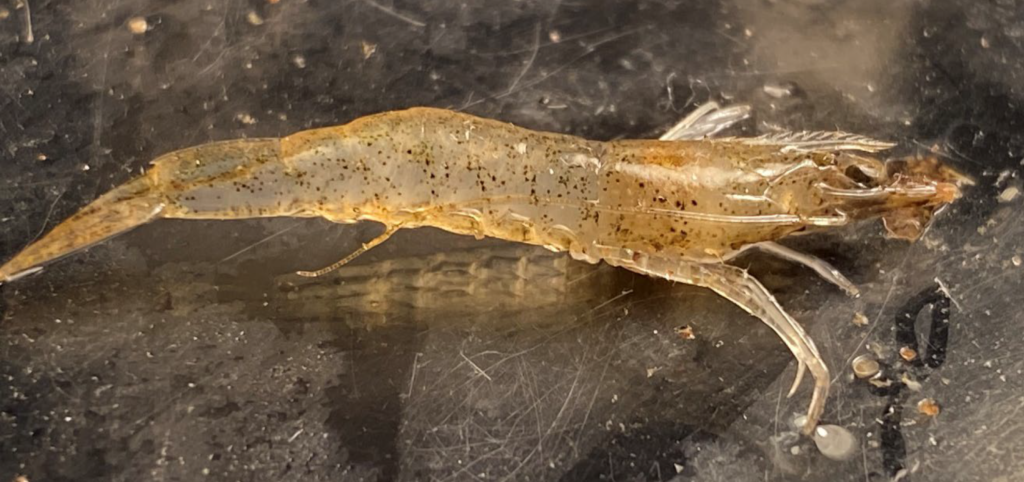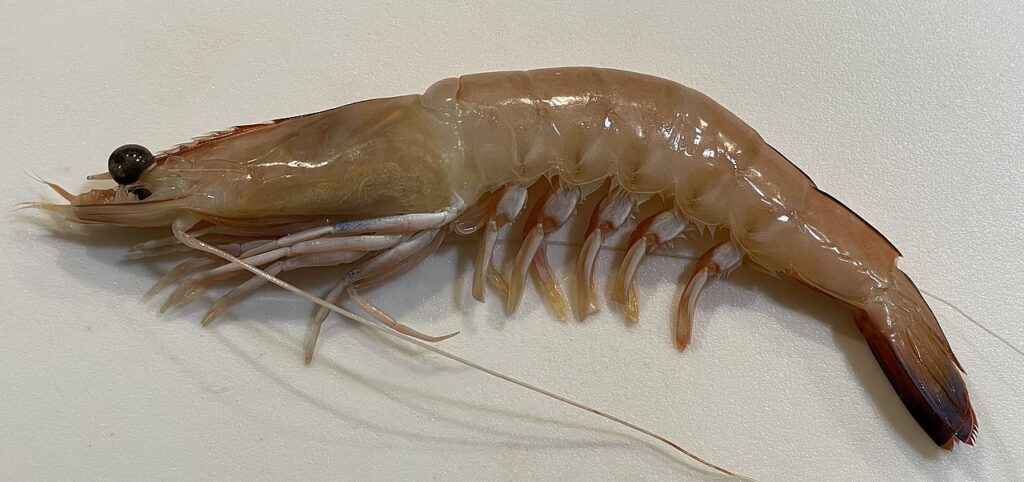
Critically endangered Eastern curlew catching a prawn at Toondah Harbour
Growing up exploring the muddy banks of the Dart Estuary in Devon, how could I have known that my muddy trudging might one day help the fight to protect Toondah Harbour from the impending ravages of an impending residential development.
What is it about muddy pools?
Those formative years led me to stare into muddy pools identifying the creatures that dwelt within.
Fast forwarding 40 years finds me on my knees on Toondah’s muddy shores looking into pools and carefully, slowly, combing my hands through the sediment.

Tiny prawns skitter ahead of the advancing wall of sediment my hands have created.
Net at hand, I catch several and then take some images with my smart phone and bring several to my home laboratory microscope.
Using a key to juvenile prawns published by Peter Young of the CSIRO (Ironically, when he worked at the old CSIRO base next to Toondah Harbour), I find that the tiny animals have a rostrum with a spine on the lower surface.

Measurement from tip of rostrum to the posterior of the cephalothorax was 10mm.
The rostrum is the spike at the front of our commercial prawn species that always seems to punch a hole in any wrapping provided by Woolies, Coles, or your local purveyor of marine products!
Muddy pools are a prawn nursery
This little spine is diagnostic. These tiny creatures are juvenile Eastern King Prawns. The presence of three-size cohorts that I could discern means that they are using muddy pools on Toondah’s shores as a nursery habitat.

Far from the useless barrens, muddy shores are highly productive. Tiny fish and prawns can settle in these features and escape predators while continuing to feed and grow.
How much will our prawn fishery lose if this wonderful, rich habitat is buried under millions of tons of development?
It is time to celebrate the mud. For more of us to get on our knees and stare keenly into muddy puddles.
Ian Tibbets
About Ian Tibbets

Dr Ian Tibberts is an Associate Professor at the School of Biological Sciences, University of Queensland where he is a UQ expert on Moreton Bay’s marine life.
Ian was a guest speaker at the World Wetlands Day celebrations held in G.J. Walter Park on 7 February 2023.
More muddy reading
Why we should love the Redlands’ mudflats
Redlands2030 – 15 March 2023
Please note: Offensive or off-topic comments will be deleted. If offended by any published comment please email thereporter@redlands2030.net